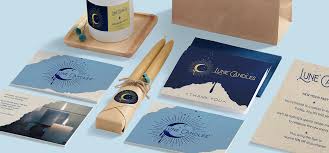
Key Takeaways
Table of Contents
In an era dominated by digital media, printed catalogs have not lost their appeal or effectiveness. Instead, they offer a tactile and lasting way for brands to capture attention, differentiate themselves, and leave a memorable impression. With the right strategies, print catalogs can serve both as a visual showcase and a bridge to online engagement, helping businesses achieve a quick turn around for catalog printing while maintaining quality and creativity. Individuals still crave the sensory experience of flipping through a beautifully designed catalog, making them an invaluable tool in modern multichannel marketing.
Catalogs are transforming how brands connect with consumers, increasing perceived brand trust and triggering spontaneous purchases. When combined with digital technologies, catalogs can present products, tell immersive brand stories, and drive higher engagement. They enable brands to target specific customer segments or promote curated collections, adapting to trends and market changes. Personalization and data-driven insights have led to increased response rates and loyalty. Integrated technologies, such as QR codes and AR, enable brands to track effectiveness and measure customer behavior with precision, creating memorable customer experiences that evoke both nostalgia and innovation.
Enhancing Catalogs with Digital Integration
Blending print and digital is one of the most potent ways to modernize catalogs. QR codes, AR features, and digital trackers invite readers to transition from the page to online experiences instantly. A reader might scan a code to watch a demo video, customize a product, or unlock exclusive online deals. Retail giant IKEA, for example, utilizes AR-enabled catalogs to enable shoppers to preview furniture in their homes, thereby closing the gap between browsing and purchasing. These integrations also provide data on when and how catalogs are used, helping brands optimize future campaigns for even greater ROI.
Personalization and Data-Driven Content
Modern catalogs leverage advanced analytics and customer data to deliver highly relevant content. Detailed purchase histories and demographic data enable brands to customize product assortments or deliver targeted offers. This approach transforms a generic catalog into a personalized buying guide, often resulting in higher conversion rates and stronger brand relationships. According to MediaPost, personalized print marketing continues to outperform generic campaigns, particularly in competitive industries like retail and luxury goods.
Storytelling Through Catalog Design
Powerful catalog marketing transcends transactional promotion by using editorial techniques and storytelling elements. Brands like Patagonia excel by pairing product information with stories about sustainability, adventure, or manufacturing transparency. These catalogs read more like lifestyle magazines, encouraging readers to immerse themselves in a broader narrative rather than just a list of items. Story-driven design also helps position brands as thought leaders and community builders, fostering deeper emotional connections that drive loyalty beyond the page.
Leveraging Interactive Print Elements
Print catalogs become even more immersive when layered with tactile and interactive elements. Think fold-out pages, textured materials, pop-ups, or scent panels. These features engage additional senses and prompt readers to linger, increasing the likelihood of purchase. Interactive elements paired with digital calls to action, such as scannable coupons, further amplify results by driving both physical and online engagement. As consumers seek more dynamic experiences from print, these techniques make your catalog impossible to ignore.
Seasonal and Thematic Catalogs
Timing is everything in marketing, and catalogs are no exception. Seasonal or thematic editions—such as spring fashion launches or holiday gift guides—capitalize on current trends and events, creating a sense of urgency and prompting timely purchases. These catalogs also help brands stay top-of-mind, as consumers anticipate receiving the next edition that aligns with their interests or needs. Thematic catalogs are particularly effective for cross-promotion and bundled offers, encouraging larger purchases and higher customer value per engagement.
Sustainability in Catalog Production
Eco-friendly catalog production is becoming an increasingly important priority for both brands and consumers. Using recycled paper, soy-based inks, and sustainable printing methods signals a business’s commitment to the environment and can enhance reputation. Promoting responsible disposal and even catalog reuse ensures your marketing materials do not end up as needless waste. Highlighting these choices within the catalog itself can further build credibility and resonate with eco-conscious audiences, attracting a broader range of customers who prioritize sustainability in their purchasing decisions.
Measuring Catalog Performance
To maximize ROI, brands must go beyond distribution and assess how catalogs influence customer actions. Using personalized promo codes, trackable URLs, and unique QR codes enables marketers to identify which pages, products, or campaigns drive the most responses. Monitoring metrics like catalog-driven web visits, redemption rates, and repeat orders helps refine strategies over time. By integrating print analytics with digital data, brands gain holistic insights into customer journeys, informing smarter marketing investment with every campaign.
Conclusion
Printed catalogs continue to thrive as a modern marketing powerhouse when augmented with technology, strategic storytelling, and customer-centric design. Their ability to blend tangible brand presence with digital interactivity ensures they remain relevant, effective, and memorable in a fast-changing landscape. Brands that embrace these creative catalog strategies will capture attention, foster loyalty, and drive both immediate and lasting results.

This post has been published by the admin of our website, responsible for content management, quality checks, and providing valuable information to our users.